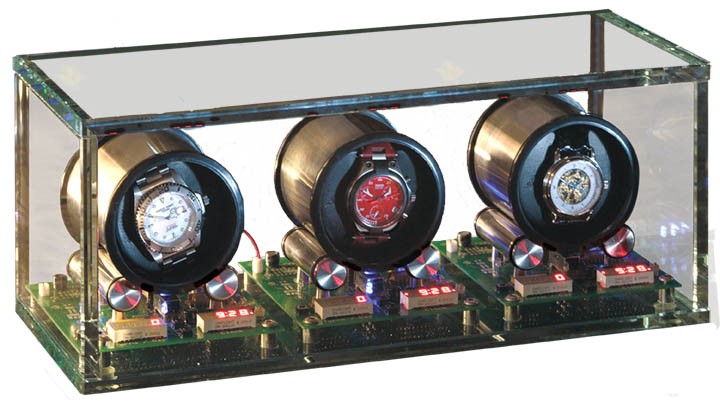
An automatic watch or a self-winding watch is of a great benefit to the wearer as it makes manual winding unnecessary. As the name suggests, a self-winding watch is one where the mainspring, which is a flat coiled spring, is wound automatically due to the motion of the wearer’s arm. The technology of these watches are hundreds of years old and thus the time and skill required to make one is appreciated by watch collectors the world over
These watches were first developed by Rolex as early as 1931. However, they did not gain popularity until after World War I, when significant changes and improvements were made to them.
In a manual watch, the spring has to be wound periodically by turning a knob so that the clock keeps on running. Automatic watches, however, have a unique mechanism to wind the mainspring. The movements of the user’s arm wind the clock through a series of reversers and reducing gears. Similarly, the movement of the user’s wrist or body results in the rotor; a metal weight that is attached to a wound up mechanism, to move freely on its staff in the centre of the watch. This back and forth movement of the rotor winds the watch.
A fully wound spring can keep the watch running for approximately two days, even during the night when it’s stationary. Despite its benefits, self-winding should be avoided as it may lead to over-winding that would break the mainspring.
 Another interesting device from the world of watches is a watch winder. If you find yourself in a situation where you have a watch that you wear only on special occasions, then a watch winder is the thing for you. Watch winders keep your watches running even when you’re not wearing them by providing the motion necessary for it to keep time. These are helpful for people who have moon phases or calendars on their watches and need to keep them running constantly.
Another interesting device from the world of watches is a watch winder. If you find yourself in a situation where you have a watch that you wear only on special occasions, then a watch winder is the thing for you. Watch winders keep your watches running even when you’re not wearing them by providing the motion necessary for it to keep time. These are helpful for people who have moon phases or calendars on their watches and need to keep them running constantly.
Watch winders are very simple to use as all you have to do is place your watch on the winder. They work by twisting gears that are attached to the tension spring. Once the gear is twisted, and the spring is at full tension, the watch will start working. There is even a special kind of watch winder where non-automatic watches can be wound by rotating the watch crown periodically. However, these devices are not at all required if you wear your watch regularly.
Though automatic watches and watch winders lost their popularity in the 1970s, they have become increasingly popular now due to their ease-of-use and their classical look. People also prefer these watches for another reason too, the clean source of energy they run on. No batteries or any external power sources are required as it just uses the motion of your wrist and tells you the accurate time.



